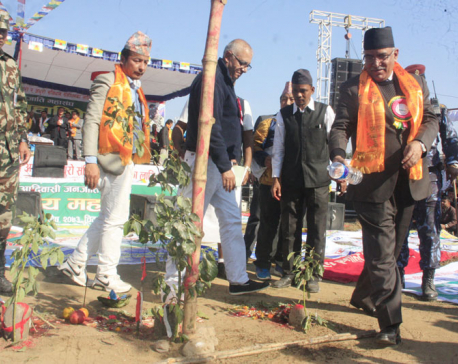
OR
IC demonetization
India’s decision to ban Indian currency notes of Rs 500 and Rs 1,000 denominations that are in circulation, almost overnight, has created a wave of panic that is rippling across India. Indian banks are struggling to cope with the surging demand from common folks to exchange the notes in their possessions—which will otherwise be worthless at the end of December—with the notes that are still legal tender. The poor people in India are so desperate they are sleeping outside the banks overnight lest they miss their only chance to obtain legal notes. Over 50 people have already died, some committing suicide at the potential loss of what little they had; others starving to their deaths after waiting outside banks for four or five days. The panic on the streets of India is palpable. Predictably, the demonetization has also created a stir in Nepal. Informal estimates put the amount of Indian currency in Nepal at around Rs 10 billion; just around Rs 33 million of it is in the formal banking channels. This is because there are hundreds of thousands of Nepalis, perhaps millions, who are currently holding Indian currency. The existing provisions allow any Nepali national to get up to Rs 25,000 in Indian currency at any bank in Nepal.
But that is not the only source of Indian currency in Nepal. The open border permits nearly unrestricted trade between Nepal and India. In exchange for the goods they export to India, Nepali traders take the payments in Indian currency, directly, completely bypassing the formal banking channel. Others people have hoarded Indian currency, mostly in Rs 500 and Rs 1,000 denominations, as they have to frequently visit India, perhaps in the course of their medical treatment or to foot the education bills of their children studying there. True, there is the option of paying by debit or credit card. But people still like the cushion of hard cash, just in case, not the least because India is far from its goal of becoming a completely cashless economy. In the meantime, Nepali nationals holding Indian currency can do nothing but wait for Nepal government to work out some kind of an exchange mechanism with its Indian counterpart. The ball is already rolling. At the request of Nepal government, India’s central bank, the Reserve Bank of India, on Friday formed a taskforce to study how the exchange facility could be extended to Nepali nationals holding the recently banned notes.
We are confident that something can be worked in the next few days. But this will be a stopgap measure. Nepal will remain vulnerable to India’s fickle fiscal and monetary policies if the national economy continues to so heavily rely on Indian currency, most of which is transacted through illegal, non-banking channels. If most of the import-export transactions took place through formal channels, only in rare cases would hard cash need to change hands, greatly reducing the country’s reliance on the Indian rupee. This will also reduce the role of the black-marketers in Indian currency in border areas. So the first order of business is to reduce the size of our informal economy—which is partly supported by unaccounted for Indian currency—by cracking down on rampant corruption in the bureaucracy and the just as pervasive tax evasion. That is the right way to go about building a water-tight cashless economy.
You May Like This

Teenage girl arrested for throwing away newborn baby at dumping site
SOLUKHUMBU, May 31: An unmarried teenage girl has been arrested for dumping a newborn infant. The police arrested 17 –... Read More...

Conspiracy to do away with federalism: PM Dahal
CHITWAN, Dec 17: Prime Minister Pushpa Kamal Dahal has said that conspiracies were being hatched to do away with federalism... Read More...

Budhigandaki sweeps away 10 houses
GORKHA, Aug 2: The flooded Budhigandaki River swept away 10 houses including three hotels at Jagat Bazaar of Sirdibas-1 leaving... Read More...





Just In
- CM Kandel requests Finance Minister Pun to put Karnali province in priority in upcoming budget
- Australia reduces TR visa age limit and duration as it implements stricter regulations for foreign students
- Govt aims to surpass Rs 10 trillion GDP mark in next five years
- Govt appoints 77 Liaison Officers for mountain climbing management for spring season
- EC decides to permit public vehicles to operate freely on day of by-election
- Fugitive arrested after 26 years
- Indian Potash Ltd secures contract to bring 30,000 tons of urea within 107 days
- CAN adds four players to squad for T20 series against West Indies 'A'













Leave A Comment